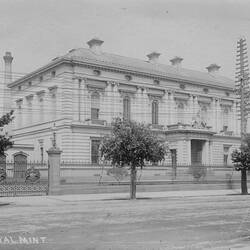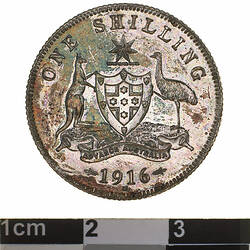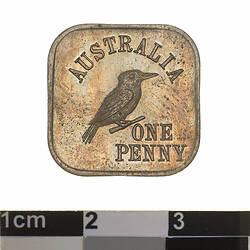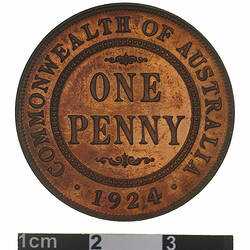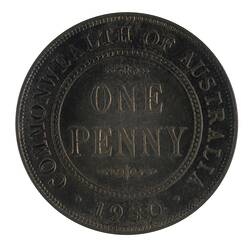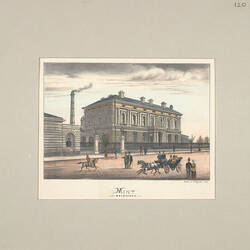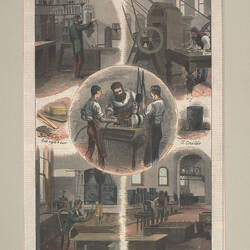Melbourne Mint's skills at accurate production saw it called on for munitions work during World War II. The annual reports during the war years were not published other than as brief summaries of coin production. Their war effort is not mentioned, although the Perth Mint managed a single line in the 1941 Report "Ammunition work was further extended" and in 1943 "Various items for maintenance of machine gun carriers were undertaken for the Ministry of Munitions". Melbourne will have had similar duties but their link with the Department of Munitions in 1943 is only suggested by the record that the halfpenny blanks that year were supplied to the mint by that Department.
At the end of the war the price of silver rose, increasing the costs of coinage. Australia was still employing the original sterling silver quality introduced in 1910 but it was now felt necessary to follow the British to a 50% silver alloy. Numerous experiments were carried out at that time with different alloys and treatments and once work on the new coins began it as all-consuming. The Melbourne Mint was not even able to take any role in the production of the Campaign Stars for the Australian Government.
The strong links with the Munitions Department saw help in preparing the new alloy. Some sterling silver coins dated 1945 were released, but the entire production of the shilling denomination was melted, with only two proof examples, retained in the Mint's own collection recording that this work had occurred (both were transferred to Museum Victoria in 1978). Coins in the new alloy were stockpiled through 1946 and were released after the necessary legislation was passed in 1947.
More Information
-
Keywords
-
Authors
-
Article types

